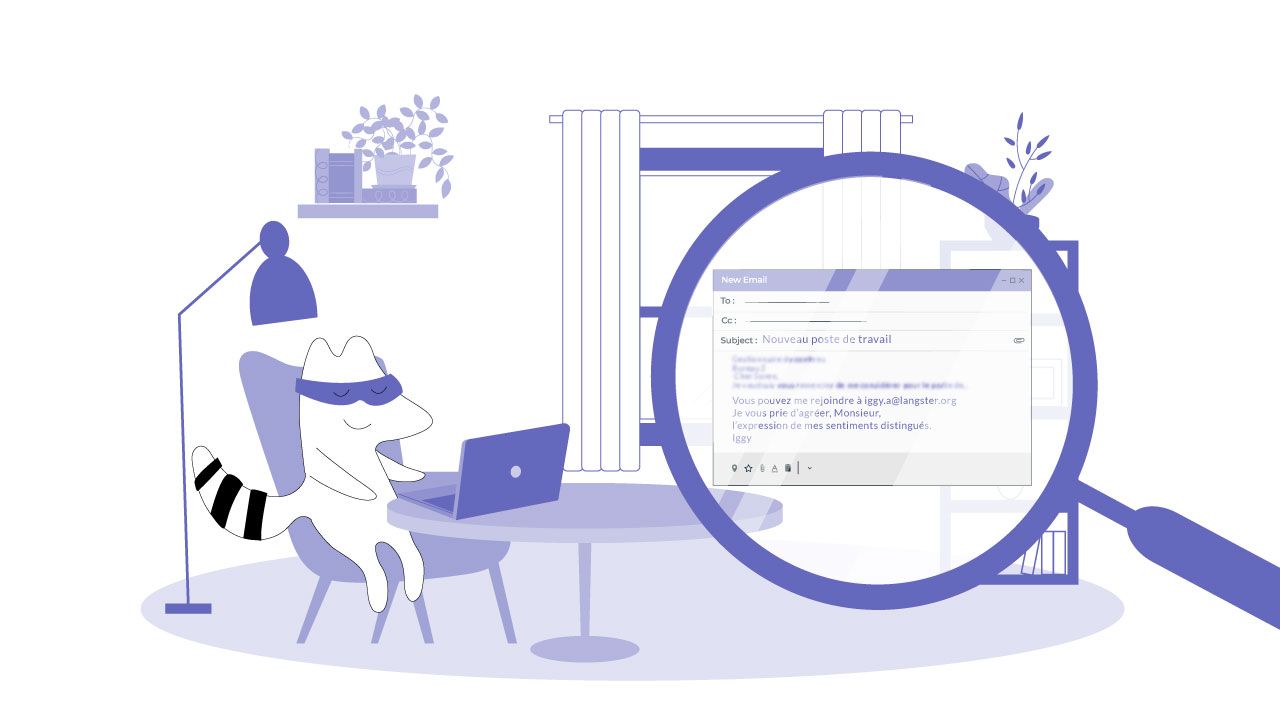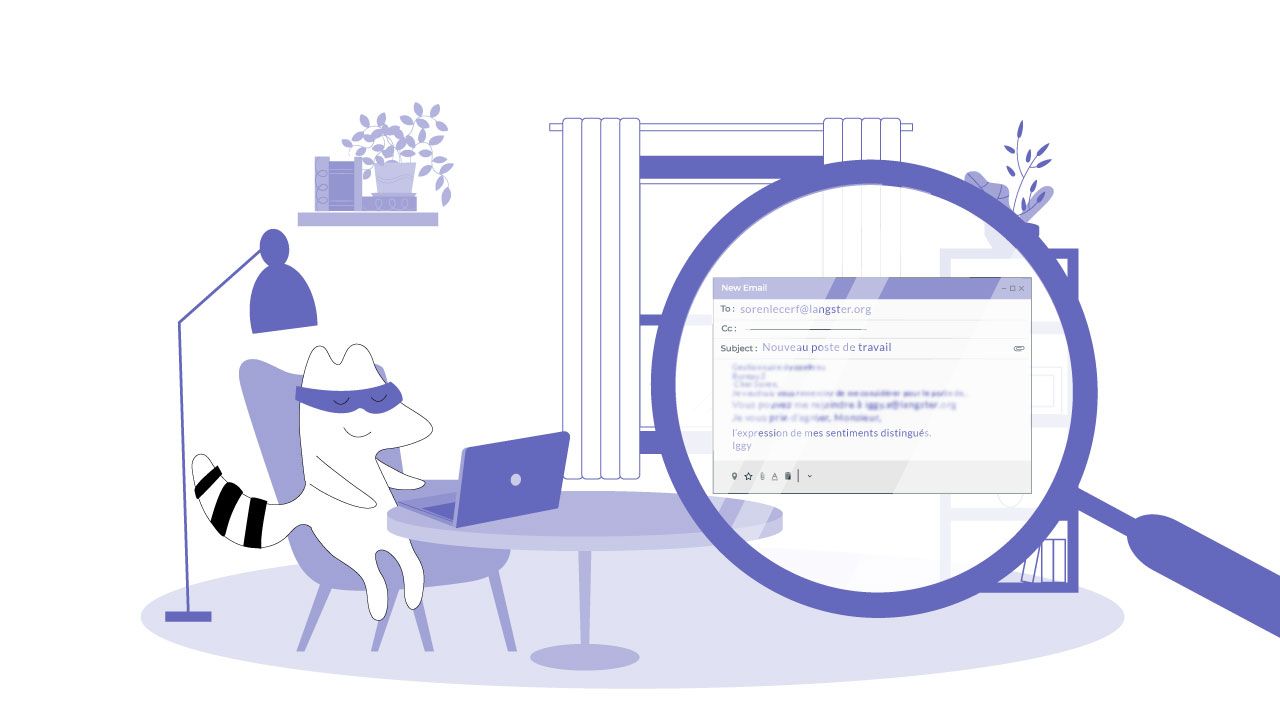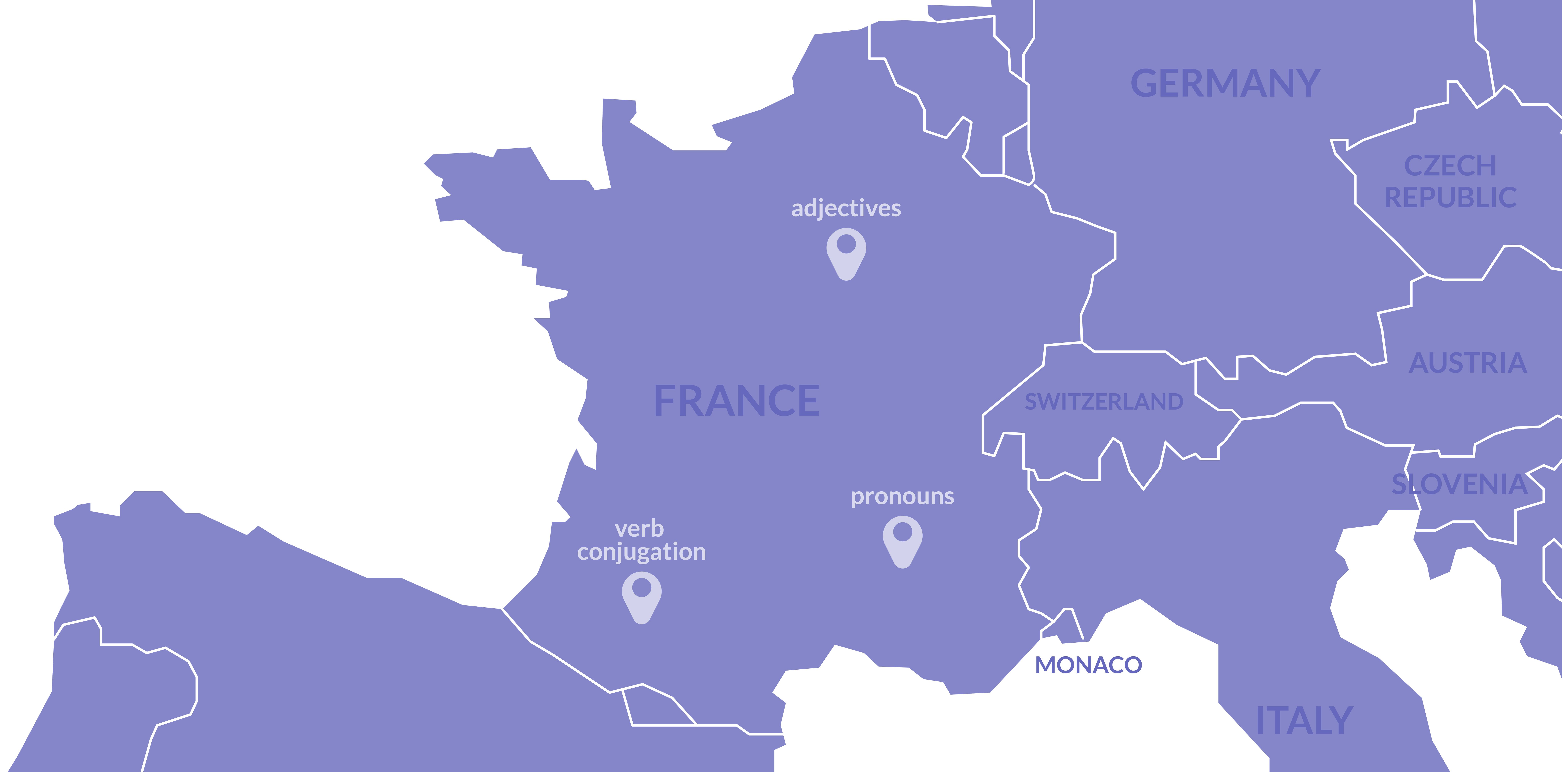
As the business world becomes increasingly globalized, it's more important than ever to be able to communicate with people in different languages. And, while English is the most commonly used language for email correspondence, French can also come in handy in certain situations.
Whether you are applying for a job with a French company, starting communication with your French business partner, or simply looking for French pen pals, there are important things you need to know about email correspondence in French. Don't worry, though, you won't have to learn it all in practice – we're here to help.
In this article, let's discuss how to write a proper email in French – from the subject line to the closing remarks. Read on, and learn how to write French business emails or converse with someone electronically in everyday life.
Learn French with Langster
La Nétiquette
The practice of writing good emails in France is called nétiquette, and it refers to the combination of guidelines that should be followed when writing an email. Just like in English, this includes using the correct salutations, formatting your email correctly, and making sure your grammar and spelling are impeccable.
Knowing your netiquette is essential for creating a positive impression on the person you are emailing. Nevertheless, it shouldn’t be seen as a set of strict rules.
Formal emails written in the official register are highly valued in French culture, but business people are always busy as bees. Thus, they often don’t have time to compose official documents when emailing something. So, don’t be shocked when someone responds to your polite, well-formatted letter with a one-sentence message.
But, this doesn’t apply to everyone. The rule of thumb here is to always write an electronic mail according to the guidelines below, even if your correspondent doesn’t do the same. Move to casual messages only when the conversation is up and running and you get on an informal basis with the person you’re talking to.
Politeness and Formality
The French language is governed by politeness and formality. Casual phrases should be used only between close friends and relatives; with all the others, it’s best to start on formal terms.
This means saying “Bonjour,” “Monsieur”, “Madame,” and addressing the other person with the polite “vous” unless they propose to move to the “tu” basis.
The same rules apply to writing emails in French. The level of formality you choose for your message will predetermine its structure and the language you use. If you’re not sure how formal your correspondence should be, it’s always best to start on the safer, more polite side and adjust your tone as the conversation goes on.
Header (En-tête) and Subject Line
When writing a French email, the first thing you should include is a header – just like in English. However, in the French language, the rules differ a bit. The usual header of a French email should include your name, surname, job title, and address. Then, it’s followed by the name of the person you are emailing. Like this:
- Prénom (first name) NOM (last name, usually in caps)
- Intitulé du poste (job title)
- Adresse (address)
And then, further in the document:
- À l’attention de (to the attention of) Monsieur/Madame LAST NAME
- Nom de la compagnie (company name)
- Adresse (address)
The subject line of your email is also important. It should be concise, easy to understand, and give the recipient a good idea of what the email is about. Don’t include too much information in the subject line, as this can be confusing or overwhelming.

Salutation (Formule d’appel)
The next thing you should do is properly greet the person you are emailing. In French, there are three main ways to do this.
The first is to simply use the word “Madame” or “Monsieur." Don't use "Mademoiselle," as this title involves indirectly mentioning the marital situation of the recipient, which is irrelevant. This is the best salutation when writing to someone you don't know.
The second option is to use the word “Cher” (dear) followed by “Madame” or “Monsieur." Please note that writing "Cher Monsieur,/Chère Madame" is only appropriate if you know the person you're emailing.
Finally, if you know the recipient’s job title, you can address them by that. Writing “Madame la Directrice” or “Monsieur le Professeur” is perfectly acceptable.
When writing a formal email, don’t use regular French greetings here. While “bonjour” can be suitable if you’re writing to someone you know, it’s best to stick to the salutations above.
The Purpose of Your Email
After the header and the subject line, it’s time to start writing the actual email. The first thing you should do is state the purpose of your message. Whether you’re writing to inquire about something, to request information, or to offer help – make sure that this is clear from the very beginning.
In this part, you can mention that you’re thanking the recipient for the information they’ve provided or note that you’re responding to their previous email. For example:
French
English
J’ai bien reçu votre courrier du 20 Juin…
I received your email from June 20th…
Je tiens à vous remercier de m'avoir envoyé la critique...
I would like to thank you for sending me the review…
Je voudrais proposer le changement de...
I would like to propose the change in...

Body of the Email
Now, it’s time to move on to the body of the message. Here, you should provide all the necessary information and explain everything in detail.
When writing the body of your email, keep in mind that French people appreciate conciseness. Try to be as clear and concise as possible without omitting any important details. Avoid writing unnecessary information, and stick to the point.
If you’re sending attachments along with your email, make sure to mention it in the body of the message. For example:
French
English
Je vous envoie les documents ci-joints.
I'm sending you the attached files.
Contact Information
At the end of your email, you should include your contact information. This is necessary in case the recipient needs to get in touch with you regarding your email. Your contact information can be your phone number or email address.
You can use the following formula:
French
English
Vous pouvez me rejoindre à…
You can reach me at…
Then, add your contact information.
Ending (Formule de politesse)
It’s time to move on to the ending of your email. In French, there is actually one pretty strict formula you can use in all formal emails:
French
English
Je vous prie d’agréer, Madame, l’expression de mes sentiments distingués.
literally: Please, Madame, accept my distinguished sentiments.
In less formal emails, you can also use more traditional expressions such as:
French
English
Cordialement
Cordially
Sincèrement
Sincerely
Bisous
Kisses (very casual)
At the end, add your signature.

Don’t Forget to Reread Your Email
Before sending your email, make sure to proofread it. This is important in any language, but especially in French, as even a small mistake can change the meaning of what you’re trying to say. Check it for typos, grammar and orthographic mistakes, and punctuation marks.
It’s also a good idea to have one of your French friends read your email before you hit “send” if your French is not fluent. This way, you can be sure that your message is clear and easy to understand for French speakers.
Basic French Email Vocabulary
Here are a few essential French words and expressions you’ll need when writing emails in French:
French
English
Courrier électronique, message électronique, mail, courriel
email, electronic messaging
If you use the word “mail” or “email” in French, native speakers will understand you. Nevertheless, we recommend sticking to the more formal word “courriel.” In mid-2003, the word “email” was banned from the official government register due to the battle with English words being imposed on the French language, and this homegrown alternative started being used in official settings.
French
English
Envoyer
to send
Supprimer
to delete
Annuler
to cancel
Spam, pourriel, courrier indésirable
spam
Adresse électronique
email address
Boîte de réception
inbox
Boîte d’envoi
outbox
Brouillon
draft
Imprimer
to print
Enregistrer
to save
Ci-joint
attached
Télécharger
to download
Mettre en ligne, télécharger
to upload
Bottom Line

Learning how to write emails in French is not as difficult as it may seem. By following the tips and tricks from this article, you’ll be able to compose perfect French business emails in no time. Just remember to keep your messages clear and concise, and don’t forget to proofread them before hitting “send.”
Another great idea is to create a draft of your French email based on the guidelines above, and just fill it with the necessary information when you need to write someone. And, if you want to practice your emails more, try setting your webmail language to French – learning a whole new bunch of French vocabulary will be easy that way.









